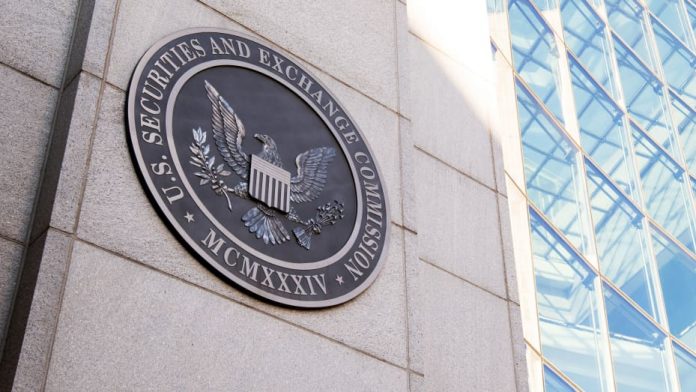This article is written by Shivani Garg, pursuing Diploma in International Business Law from LawSikho. The article has been edited by Prashant Baviskar (Associate, LawSikho) and Dipshi Swara (Senior Associate, LawSikho).
Table of Contents
Introduction
Have you ever thought that there could be legislation that is entirely in favour of investors? Much less a bill favouring transparency, not only for social and economic risks but also focusing on climate risks. What might have been a mere thought in the past, is now the practical reality in the USA. The ESG [Environmental, Social and Governance] Disclosure Specification Act of 2021 (H.R. 1187) (the “Bill”) passed by the U.S. House of Representatives on June 16, 2021, solved the major concern of investors as it stated for corporations to be more transparent to investors while disclosing social and economic risks which also includes the climate-related risks in it. Further, to make things clear to the public, the definition of “ESG Metrics” is codified in the Securities and Exchange Commission (SEC) regulations which can be found at 17 CFR Part 210.
As per Section 103 of the Bill, ESG disclosures are defined in two parts: 1. In General and 2. ESG Metrics. The purpose behind defining the terms under SEC is to provide the guidance which might be required for corporate disclosures under the Securities Act of 1933 and the Securities Exchange Act of 1934. The main reason to pass the Executive Order with respect to Climate-Related Financial Risk was the gradual increase in signatories of investment companies under asset under management (AUM) to incorporate the ESG issues in their investment decisions in recent years. As a part of this order, Climate Risk Unit was established, it focused on the role of derivatives in understanding, pricing, and addressing climate-related risk and transitioning to a low-carbon. As for the SEC, they made a Climate and ESG Task Force as well as a press release for ESG rulemaking. Further, the Bill focusing on ESG metrics had brought various other acts together (includes eleven titles) under one roof by the Corporate Governance Improvement and Investor Protection Act which addresses various areas of corporate disclosures.
Analyzing ‘ESG Disclosure Simplification Act of 2021’
The ESG Disclosure Simplification Act of 2021 is mentioned under Title I in the Corporate Governance Improvement and Investor Protection Act which directs the SEC to define that the ‘ESG metrics “must be disclosed. The act demands the public filers to simply disclose two things:
- A translucent narration of the views of the issuer about the link between ESG and the long-term business strategy of the issuer;
- A description of any process the issuer uses to determine the impact of ESG metrics on the long-term business strategy of the issues.
Further, the act also put forth the formation of the Finance Advisory Committee for the recommendations about the ESG metrics. It insists on the definition of the ESG metrics along with the analysis of the conduct of shareholders’ collective action to achieve its objectives.
Examining the objective behind ESG Disclosure Simplification Act
It can be observed that the main objective behind ESG Disclosure Simplification Act is to specifically define the ESG metrics as concluded by the SEC. However, if we put it in simple language, the Act gives the power to SEC to mandate for companies to insert the information regarding ESG metrics in the notes to their audited financial statements to keep a check on them. Further, it aims to check whether shareholders’ collective actions have any implications for the requirements of issuer filing or not. Further, setting up a Sustainable Financial Advisory Committee (SFAC) will provide a report for identifying policy changes that could ease the sustainable investments.
The Climate Risk Disclosure Act of 2021
Another important act integrated is the Climate Risk Disclosure Act under Title IV which gives guidance to SEC regarding the disclosure rules for climate-related risk matters which are, however, specialized for industries within specific sectors of the economy. The Act also includes reporting standards that are required for the estimation and disclosure of direct and indirect greenhouse gas emissions done by the covered issuer as well as by any of its affiliates. The Act extends its horizon by providing specific codified disclosure requirement which includes:
- The identification, evaluation, and also risk-management strategies which are related to both physical as well as transitional risks caused by climate change;
- Details regarding corporate governance processes and structures to identify, access, and manage climate-related risks;
- The actions that were taken by the issuer so as to mitigate climate-related risks;
- The resilience of any strategy to address climate risks being used by the issuer; and
- A description of the way in which incorporation of climate risk takes place in the overall risk-management strategy of the issuer.
SEC’s role with respect to ESG disclosures
SEC plays a vital role with respect to the ESG disclosures as the Bill calls upon ESG to be de facto material, it also mentions the permanent Sustainable Finance Advisory Committee by SEC. The rules must be issued by SEC within the span of two years that shall:
- Be specialized to such an extent that they are feasible for finance, transportation, insurance, power, mining, and non-renewable energy businesses;
- Require for the disclosures so as to incorporate social costs accountable to greenhouse gas emissions;
- Incorporate standards for disclosing assets related to fossil fuels and greenhouse gas emissions;
- Also, direct companies to consider scrutinizing scenarios that line up with the Paris Agreement’s greenhouse gas reduction targets.
Along with making the disclosure rules, the SEC has the huge responsibility to be deliberate as well as transparent so as to minimize the amount of regulatory risk.
Importance of establishing a Sustainable Financial Advisory Commission
Section 104 of the Bill states the SEC needs to establish a Sustainable Financial Advisory Commission by amending Section 4 of Securities Exchange Act of 1934 (15 U.S.C. 78n), which will consist of a maximum of 20 members who represent financial institutions, analysts, and investors along with experts on sustainable finance, each to serve for the term period of four years. The role of the Committee will be to submit a report within 180 days after its first meeting along with the recommendations regarding the disclosure required to be given by ESG metrics users to the SEC. The report given would be able to:
- Identify the challenges as well as opportunities associated with sustainable finance for the investors; and
- Recommend policy changes to ease the flow of capital towards sustainable investments [environmentally].
Further, the interesting part about the Bill is that it has the provision which states that SEC may at its own discretion ‘incorporate any internationally recognized, independent, multi-stakeholder environmental, social, and governance disclosure standards’. Such a provision will pave the path for such issues that have their presence both domestically and internationally.
Challenges in implementation of SEC’s ESG disclosure bill
What seems to be a very tempting step towards the disclosures so as to protect the environment is way too complex when it comes to the implementation by the SEC. The simple reason that can be put forward is that the ‘E’[Environmental], the ‘S’ [Social], and the ‘G’ [Governance] have vast scope individually, and when put together it seldom covers huge areas which are practically difficult to implement. Even if somehow SEC is successful in covering most of the areas as mentioned in the bill, the challenge for the SEC Commission is in what manner the access can be facilitated for the average investor towards the reliable, issuer-specific, financially material information which brings about in a cost-efficient way as well as provided in a useful format.
Conclusion
The impact of Environmental, Social, and Governance (‘ESG’) has drastically increased in recent years among the people. It has certainly become a trend towards ‘socially responsible investing’- which is a strategy of investing that scrutinizes how companies impact social issues such as climate change or diversity along with whether companies will be providing a return on such investments. To bring this strategy into action, investors looked up to the Securities and Exchange Commission (the ‘SEC’) to ask all the companies precisely to disclose these social issues in their quarterly and annual reports, public filings, and proxy statements. It can be noted that the defining ESG metrics is a notable step towards refining the SEC’s new ESG disclosures policies as well as emerging climate. Although there have been many debates on the Bill among various institutions and corporations, it can’t be denied that this policy decision regarding ESG disclosure will serve society in the greatest ways possible.
References
1. SEC Asked to Define Mandatory ESG Metrics in New Bill (natlawreview.com)
2. House Passes Bill Directing Disclosure of ESG Metrics | Regulation
3. House Passes Bill Requiring SEC to Define Mandatory ESG Metrics
5. Section 103 (b)(2) and 104 of the Bill
6. Section 103(b)(4) of the Bill
7. Executive Order on Climate-Related Financial Risk | The White House
Students of Lawsikho courses regularly produce writing assignments and work on practical exercises as a part of their coursework and develop themselves in real-life practical skills.
LawSikho has created a telegram group for exchanging legal knowledge, referrals, and various opportunities. You can click on this link and join:
https://t.me/joinchat/J_0YrBa4IBSHdpuTfQO_sA
Follow us on Instagram and subscribe to our YouTube channel for more amazing legal content.
 Serato DJ Crack 2025Serato DJ PRO Crack
Serato DJ Crack 2025Serato DJ PRO Crack











 Allow notifications
Allow notifications



